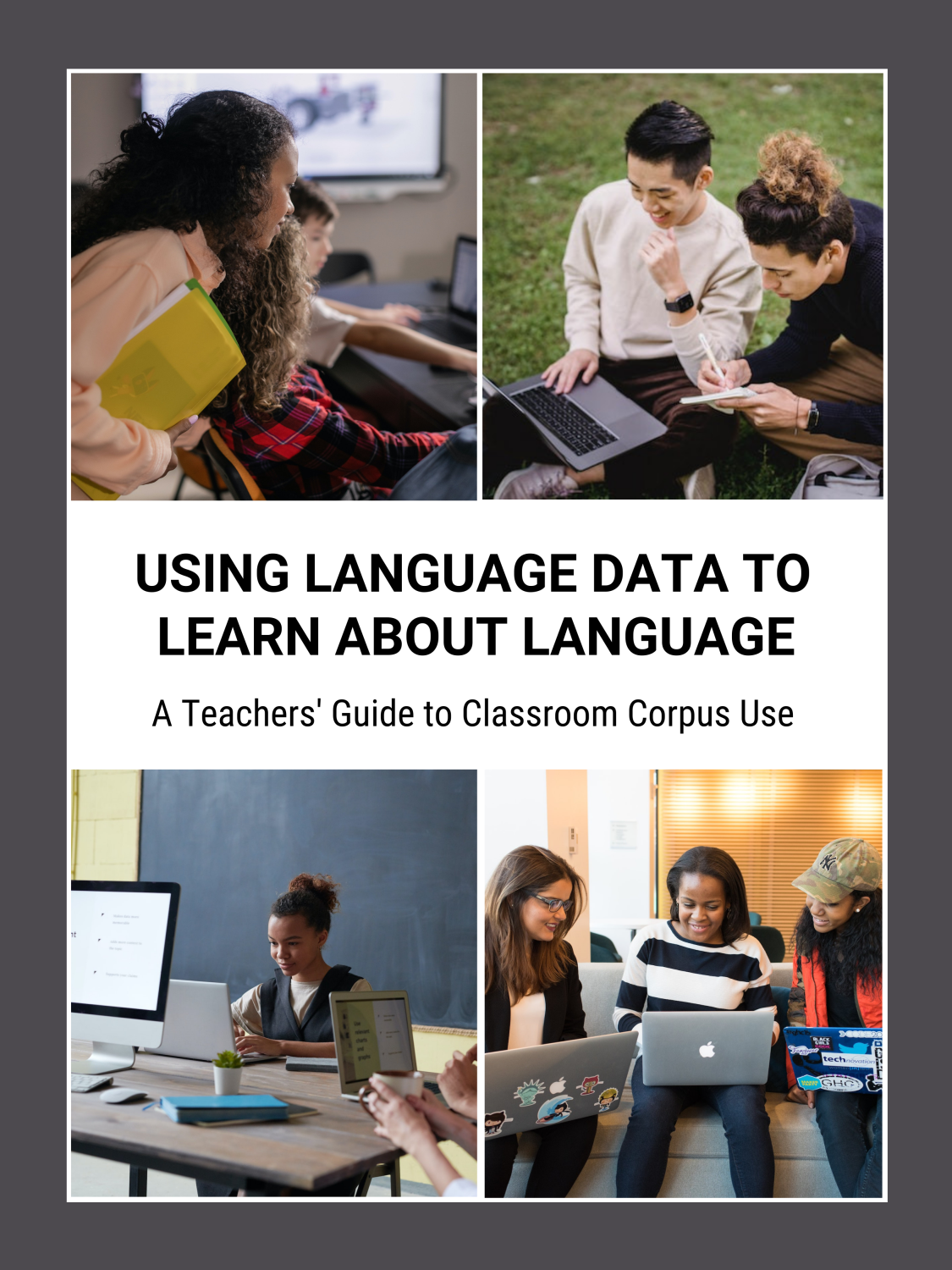Book Title: Using Language Data to Learn About Language: A Teachers' Guide to Classroom Corpus Use
Edited by Paula Tavares Pinto; Peter Crosthwaite; Carolina Tavares de Carvalho; Franciele Spinelli; Talita Serpa; William Garcia; and Adriane Orenha Ottaiano
Translated by Franciele Spinelli

Download this book
Book Description: Using language data to learn about language: A teachers’ guide to classroom corpus use contains English, Portuguese and Spanish teaching resources to be used in international language classes. These resources can be used in classrooms with internet access (hands on) or without (hands off). This collection of ready-made DDL lesson plans is curated to help both new and experienced teachers introduce DDL concepts into their language lesson planning. In each lesson, teachers and learners will find a description of the target tool and a link to a short video, in which the author(s) of the lesson explain(s) how this tool can be used. Detailed lesson plans are included, which can be used as a starting point or as an inspiration for the creation of future class activities. Most of the lesson activities can be done 1) with access to the internet (hands on); and/or 2) without access to the internet (hands off). This is useful for schools where students are not allowed to use their own devices, or where internet access is not available.
Contents
Book Information
Book Description
Using language data to learn about language: A teachers’ guide to classroom corpus use contains English, Portuguese and Spanish teaching resources to be used in international language classes. These resources can be used in classrooms with internet access (hands on) or without (hands off). The idea behind using corpora in the classroom is that learners will play the role of language “detectives”, taking charge of their own learning process while working with others to investigate the language in use. Corpora are large collections of electronic text that learners can query and manipulate to learn about language through repeated exposure. Learners are encouraged to observe data, create hypotheses, formulate rules on linguistic patterns (i.e., an inductive approach), and/or verify the validity of grammatical rules from textbooks (i.e., a deductive approach). This perspective is called Data-Driven Learning (DDL), and is now widely featured in Computer Aided Language Learning (CALL) research (Boulton, 2010; Crosthwaite, 2020; Frankenberg-Garcia, 2021; Pérez-Paredes, 2020; Scott, 2010; among others). This collection of ready-made DDL lesson plans is curated to help both new and experienced teachers introduce DDL concepts into their language lesson planning. In each lesson, teachers and learners will find a description of the target tool and a link to a short video, in which the author(s) of the lesson explain(s) how this tool can be used. Detailed lesson plans are included, which can be used as a starting point or as an inspiration for the creation of future class activities. Most of the lesson activities can be done 1) with access to the internet (hands on); and/or 2) without access to the internet (hands off). This is useful for schools where students are not allowed to use their own devices, or where internet access is not available.
Licence
Using Language Data to Learn About Language: A Teachers' Guide to Classroom Corpus Use Copyright © 2023 by The University of Queensland is licensed under a Creative Commons Attribution-NonCommercial 4.0 International License, except where otherwise noted.
Subject
Language learning: specific skills

